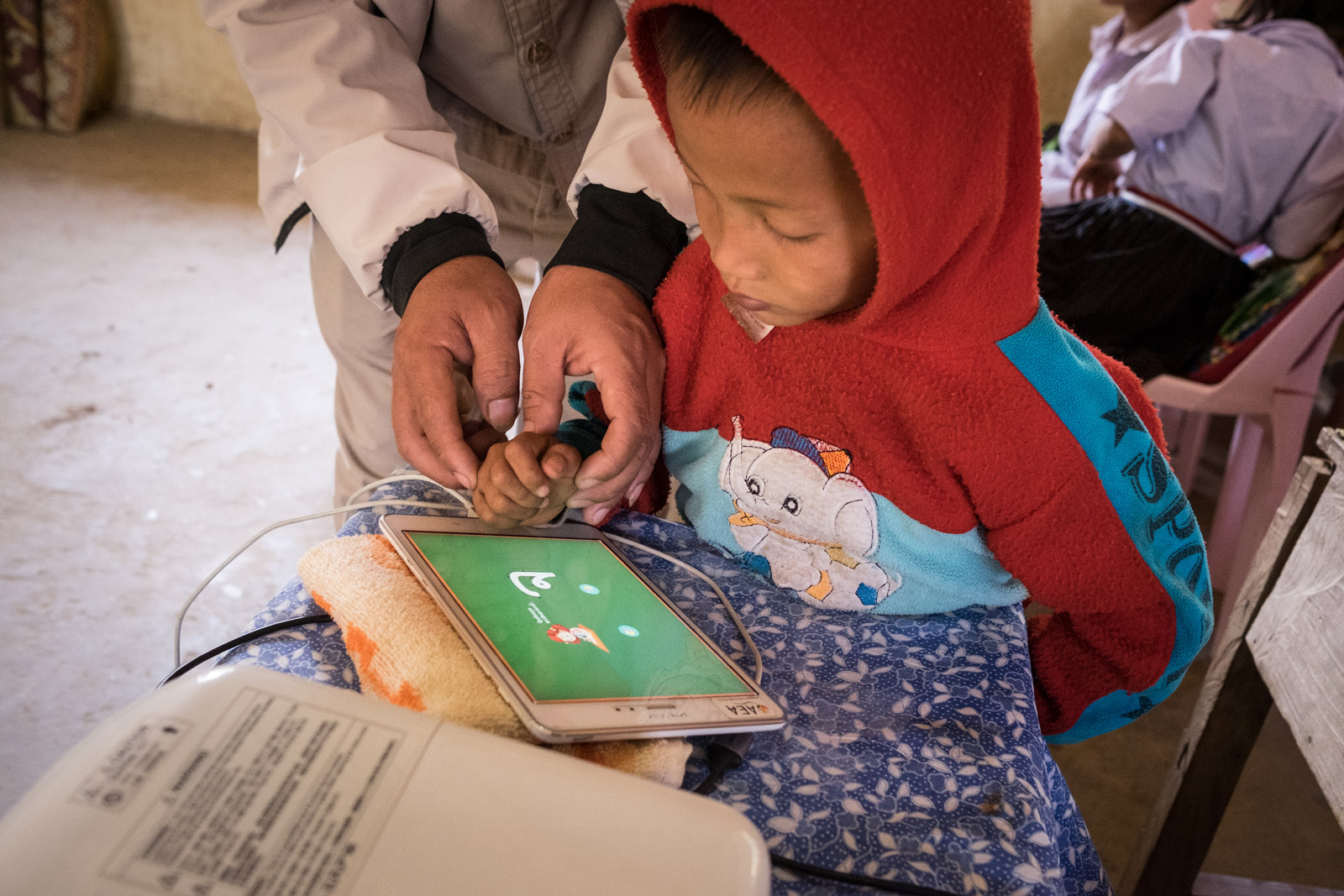In KohnKaen village, a rural settlement in Vientiane province home to approximately 1,400 inhabitants mostly from ethnic minority groups, internet access and smartphones are a recent, but very welcome, arrival.
Souphaphone Jalernsouk borrows her parents’ smartphone whenever she can to listen to English music, even though she doesn’t understand the words yet. At just 10 years of age, Souphaphone is already thinking about her future and that of her family’s – how English could enable her to leave her village and travel to neighbouring Thailand or Vietnam to support them.
In 2020, 40 million people are reported to have come online for the first time in six countries across Singapore, Malaysia, Indonesia, the Philippines, Vietnam and Thailand, bringing the region’s total number of online users to 400 million. But while countries in the region steam ahead in terms of speed, coverage and cost – with users in Thailand on average spending significantly more time on mobile internet than their global peers – other countries such as Laos are badly lagging behind.
According to the World Bank, by almost every measure, Laos is lagging significantly in terms of accessibility, quality and affordability of internet services compared to other comparable regional economies. While 81% of the county’s population are subscribed to basic mobile services, only 39% of the population are reported to be mobile internet users and less than 2% of the country’s households are reported to have fixed broadband internet access at home, according to the government’s most recent social indicator survey.
Souphaphone is one of only a few children in her school to have access to the internet via her parent’s smartphone. As neighbouring countries such as Cambodia rolled out radio distance-learning programmes to students without internet access during Covid-19 enforced school closures, Laos’ rural students, like Souphaphone’s classmates, were largely excluded from education when schools closed for 56 days in March as a pandemic precaution.
I don’t know how to teach online, we don’t have enough ICT equipment and I also don’t know how to use the equipment
For populations living in rural areas without paved roads, access to distance-learning and technology has been even further out of reach as only 0.3% of households have fixed broadband internet access at home, 2% a computer, 49% a TV and 15% a radio.
SomBat Xongyer – a primary school principal in NamLao village, Meun district, Vientiane province – attests that schools like his need support not just in terms of improved and affordable connectivity, but also basic training in how to use digital technology. The most recent government statistics reveal that as of 2017, just 7% of people in rural Laos aged 15-49 have used a computer, and less than 20% have used the internet in their lives.
“When schools closed, we gave our students homework but didn’t follow up until schools reopened again, months later. Even now, we still don’t offer our students any kind of online learning. I don’t know how to teach online, we don’t have enough ICT equipment and I also don’t know how to use the equipment”.
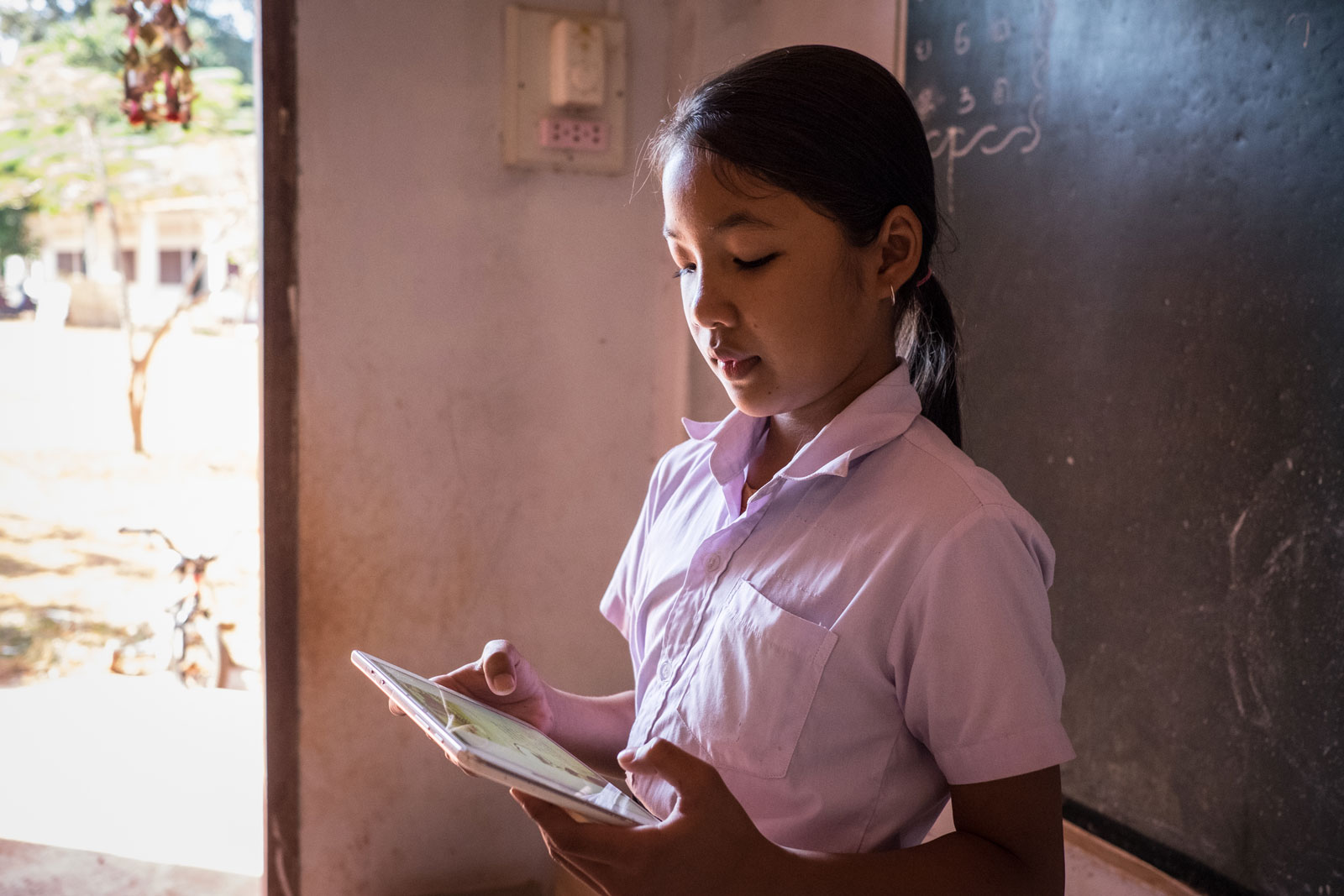
With such low uptake on remote learning, the effect of Laos’ three months of school closures have been significant.
A recent policy brief published by the UN Development Programme points to school closures as directly related to Laos’ 2.6% drop in its Human Development Index in 2020. The Human Development Index measures the key dimensions of human development according to three areas – life expectancy, access to education and gross national income per capita.
Laos’ education index saw a steep 7.77% decline as closures lasted approximately 56 school calendar days, with the issue only exacerbated by poor internet connectivity.
But as the Covid-19 pandemic pushes governments, civil society organisations, UN agencies and others to explore the socio and economic impacts on populations, opportunities are arising to reduce inequalities in digital access in Laos, as well as prioritise areas which have until now been largely neglected in policy making.
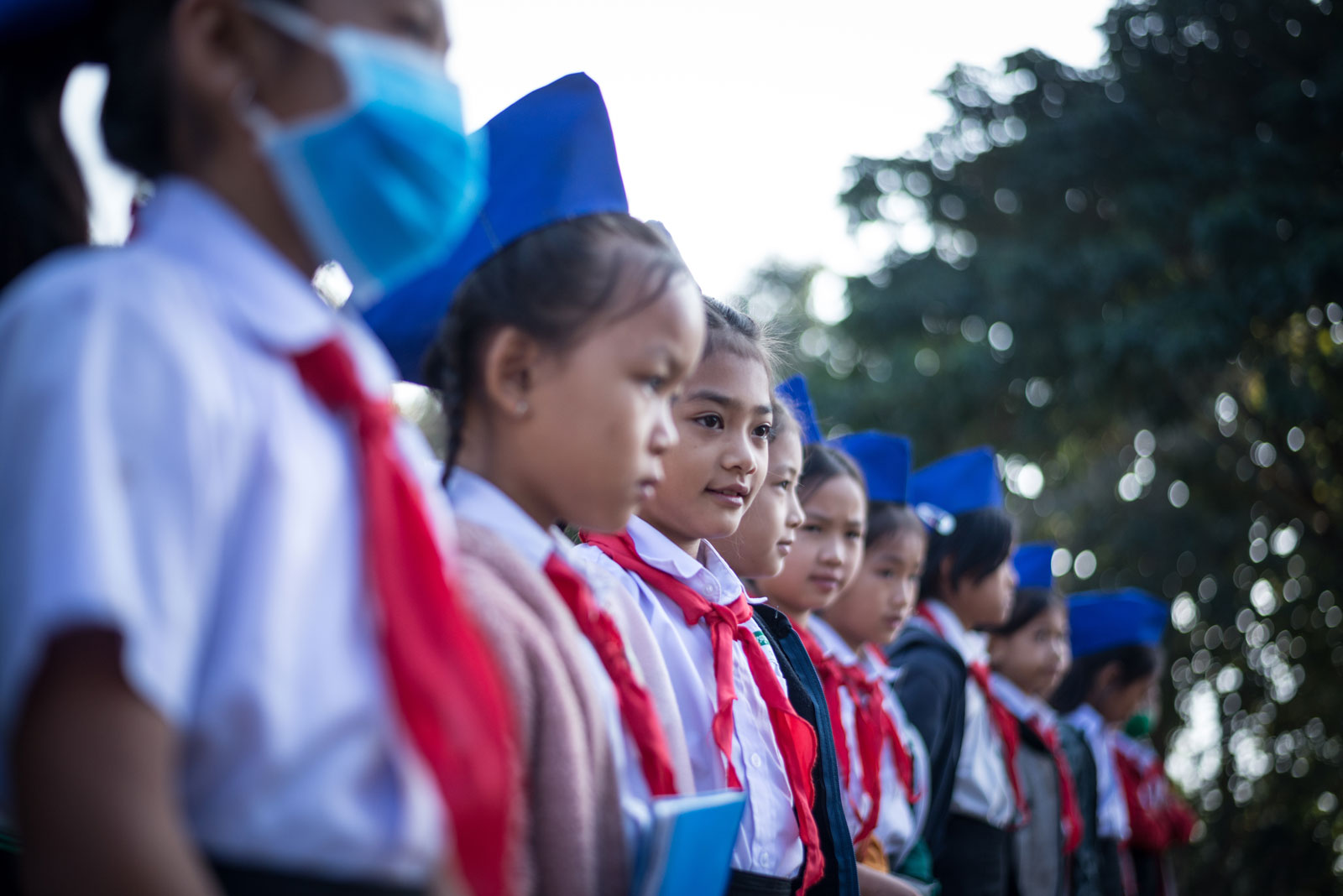
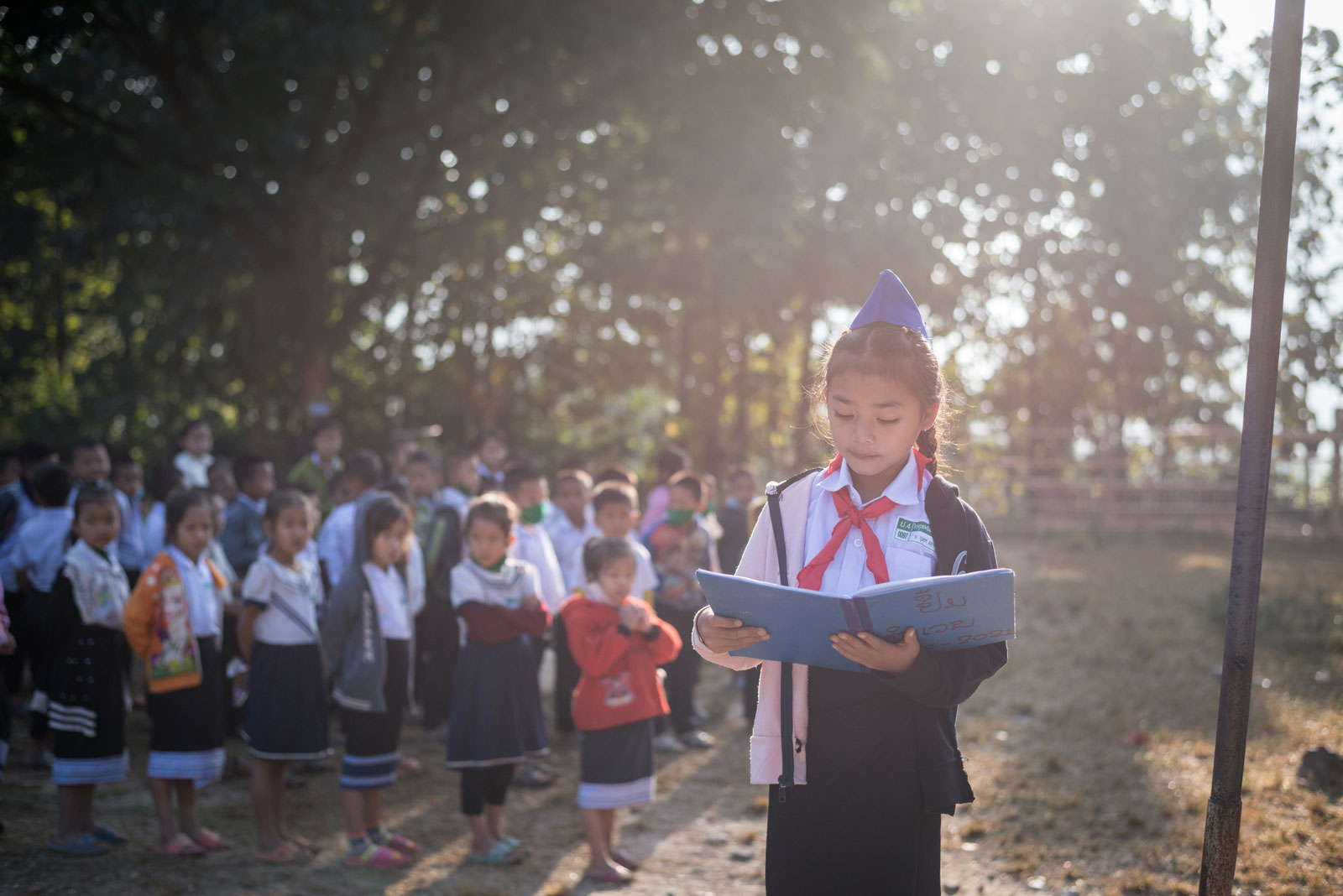
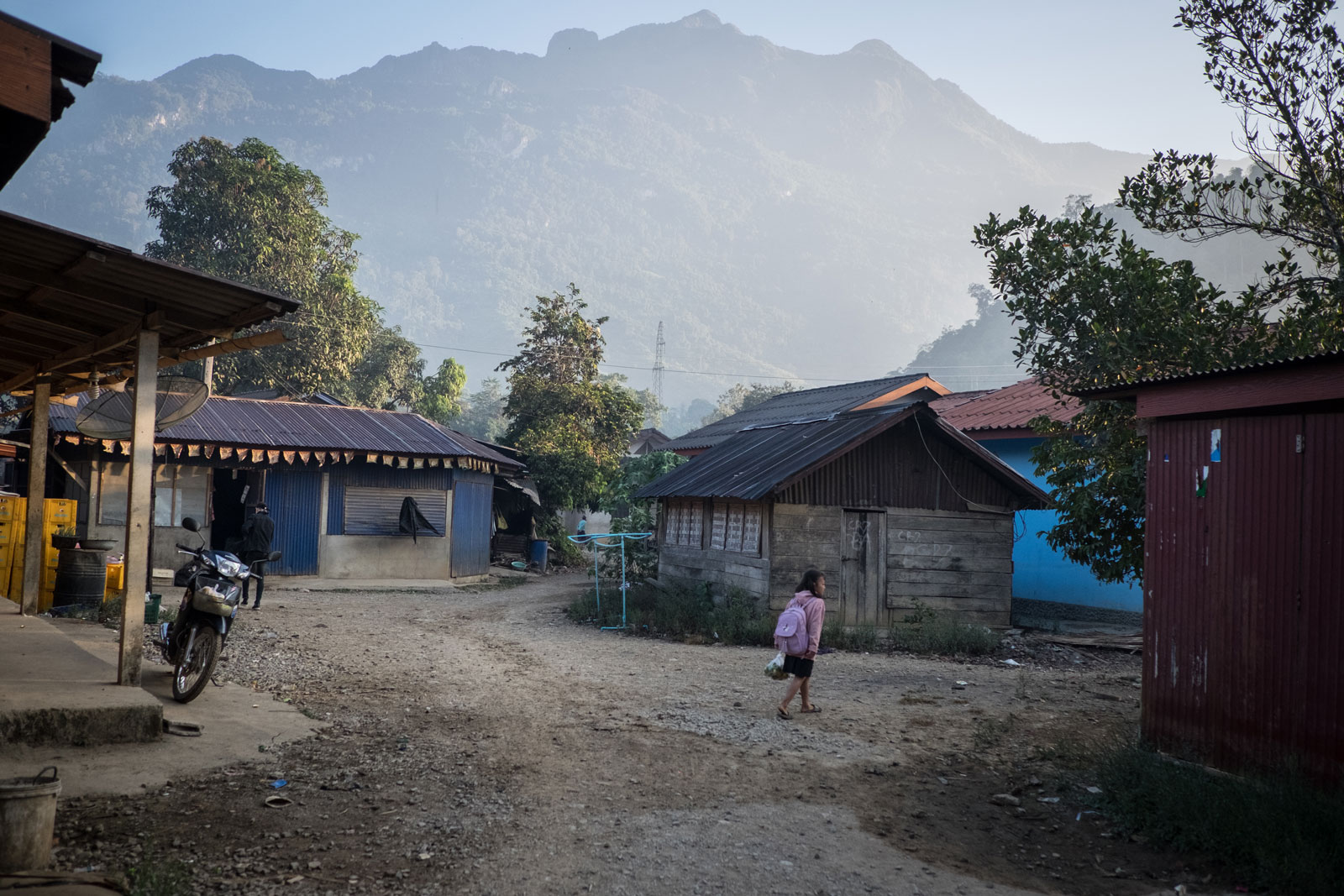
Photo: Matthew Dakin/Aide et Action
To mark this year’s International Day of Education on January 24, a global emphasis is being placed on increasing collaboration and international solidarity to place education at the heart of Covid-19 recovery, of which remote learning and internet access will be central for the foreseeable future.
In the Laos’ Ministry of Education and Sports’ (MoES) Education COVID-19 Response Plan – developed in August last year with the support of UNICEF in collaboration with other NGOs and UN agencies – a need was identified for a digital platform to house all online courses, apps, and integrate access to TV, radio, YouTube channels, and more.
But according to the findings of a recent Aide et Action report on the impact of Covid-19 on education in Laos, narrowing the digital divide requires more than ICT training and access to smartphones, tablets or computers. Just as vital, the report says, is the expansion of an adequate internet signal to cover rural and remote areas.
A disparity in available bandwidth across Laos means that connection is concentrated in urban areas and outside the main cities and provinces, national connectivity is patchy or non existent
Even before Covid-19, the World Bank made similar policy recommendations for targeted actions designed to increase participation online, which included access to affordable fixed broadband as Laos’ prices were notably higher than in neighboring economies.
According to a World Economic Forum study, Laos ranked 192nd most expensive out of 196 countries globally for fixed broadband at $231.76 per month as of 2017. By comparison, the average cost of fixed broadband in Cambodia was $52.89, Vietnam $62.86 and Myanmar $76.76. While the cost has fallen in the years since, this drop has mostly been felt in urban centres like Vientiane. In a country where primary school teachers earn approximately $220-320 per month, this lack of affordability and availability means the majority of schools and teachers in rural Laos still rely on their mobile phones for internet access, which is patchy at best.
The UN Conference on Trade and Development 2018 pointed to the absence of an independent regulator, lack of a licensing framework and lack of a level playing field in the market are perceived by operators – both government and privately-owned – as key impediments to the continued development, and ultimately affordability, of the Lao telecommunications sector.
A disparity in available bandwidth across Laos means that connection is concentrated in urban areas and outside the main cities and provinces, national connectivity is patchy or non existent. This leaves small villages and remote, rural areas “unserved and underserved”, according to the UN.
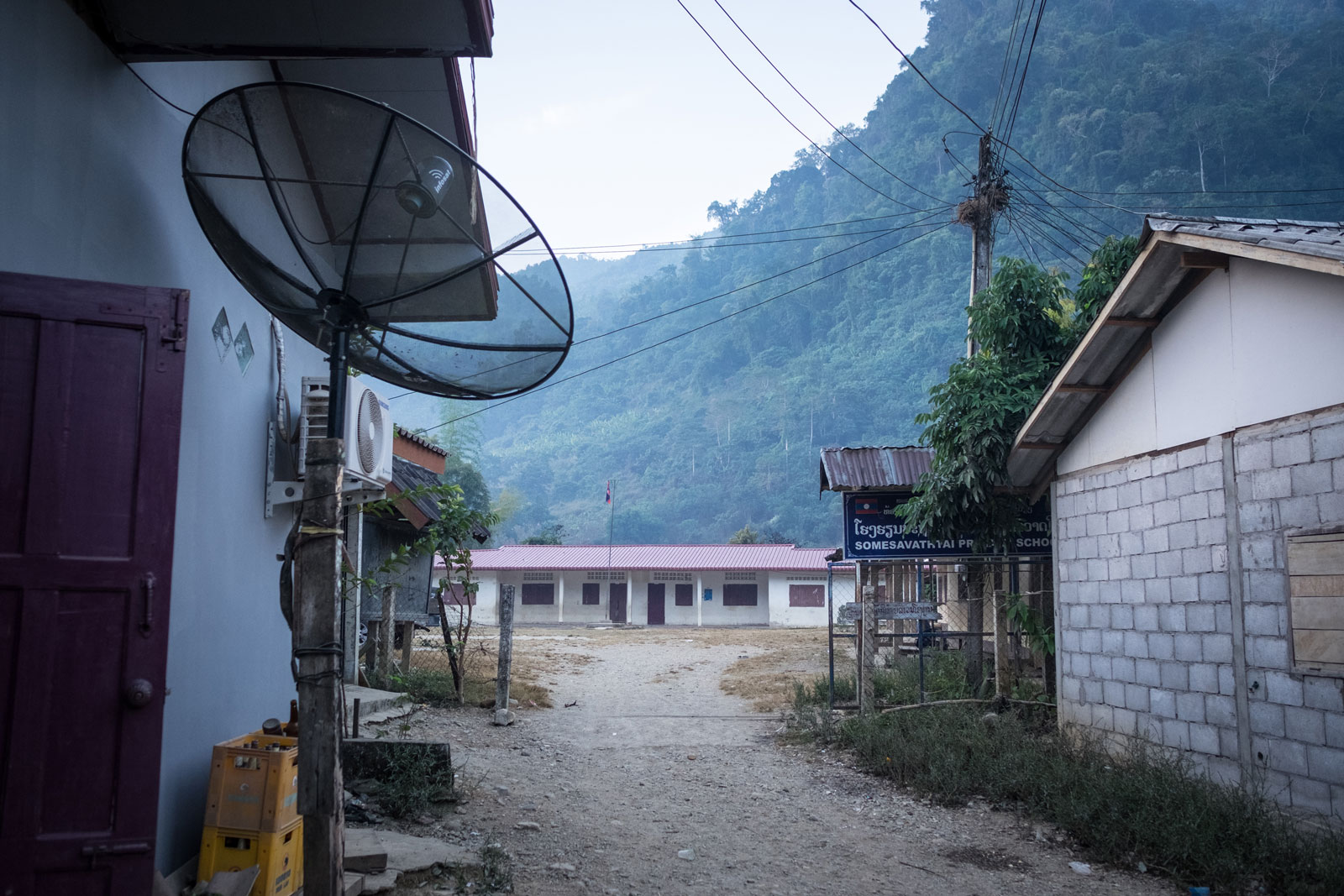
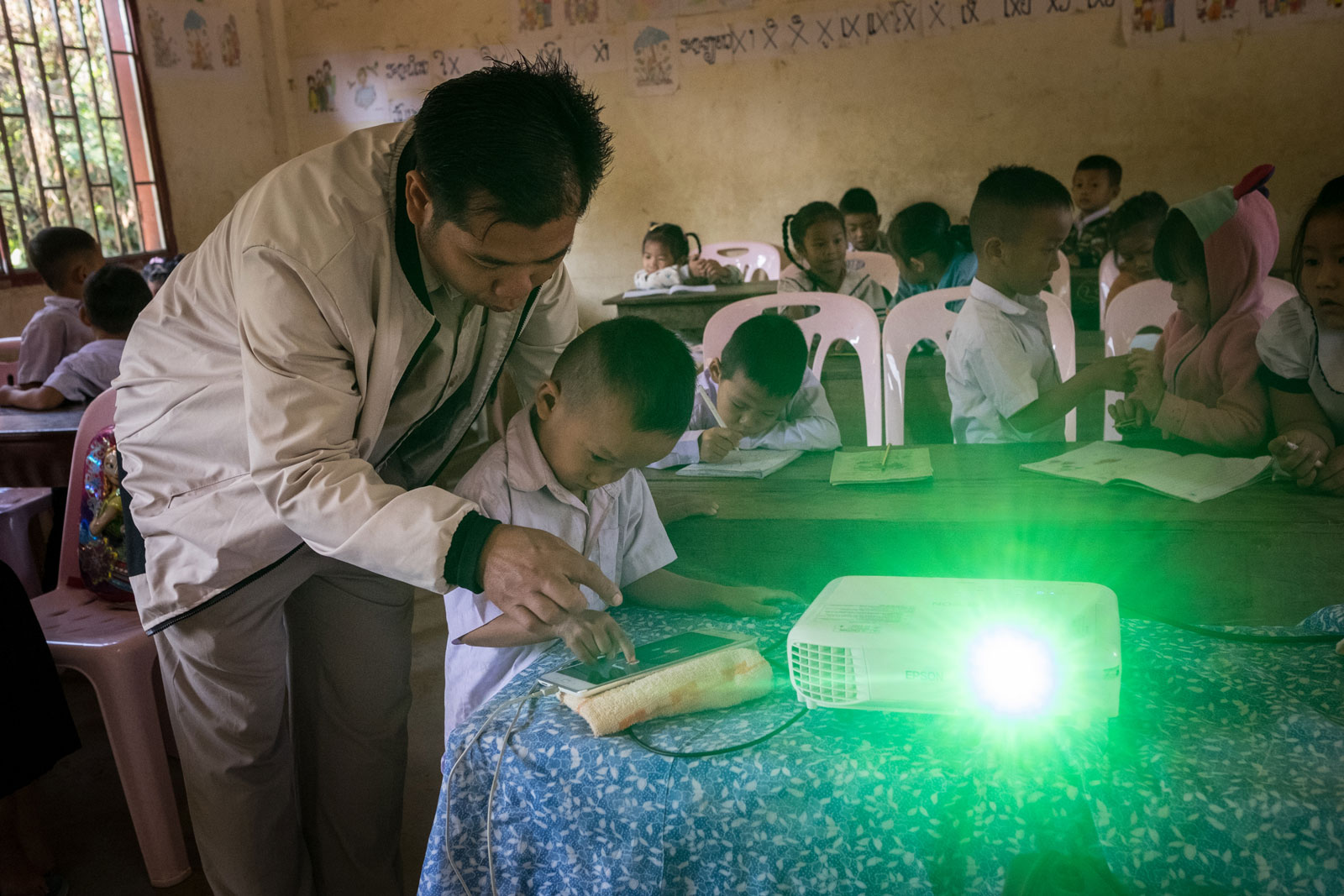
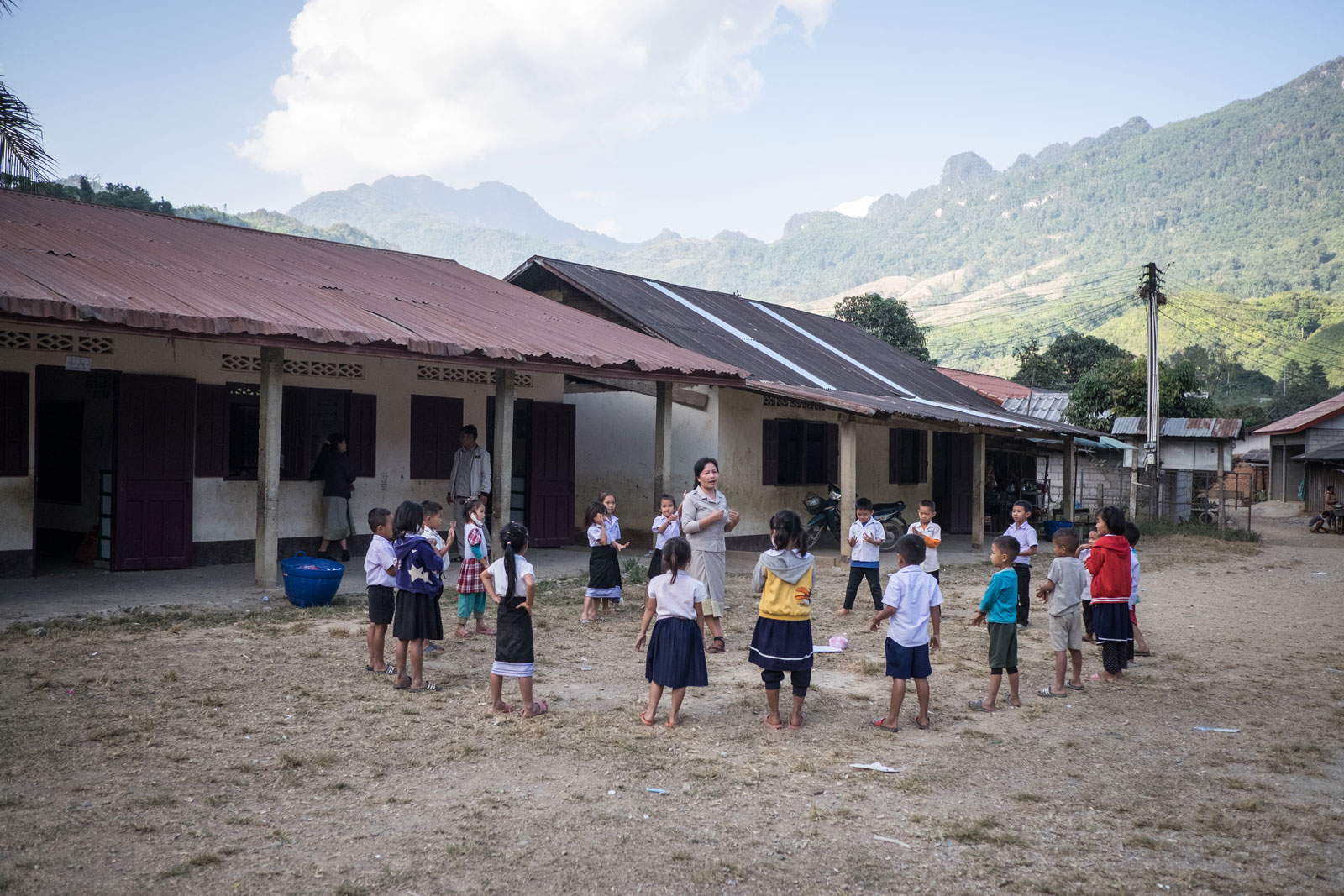
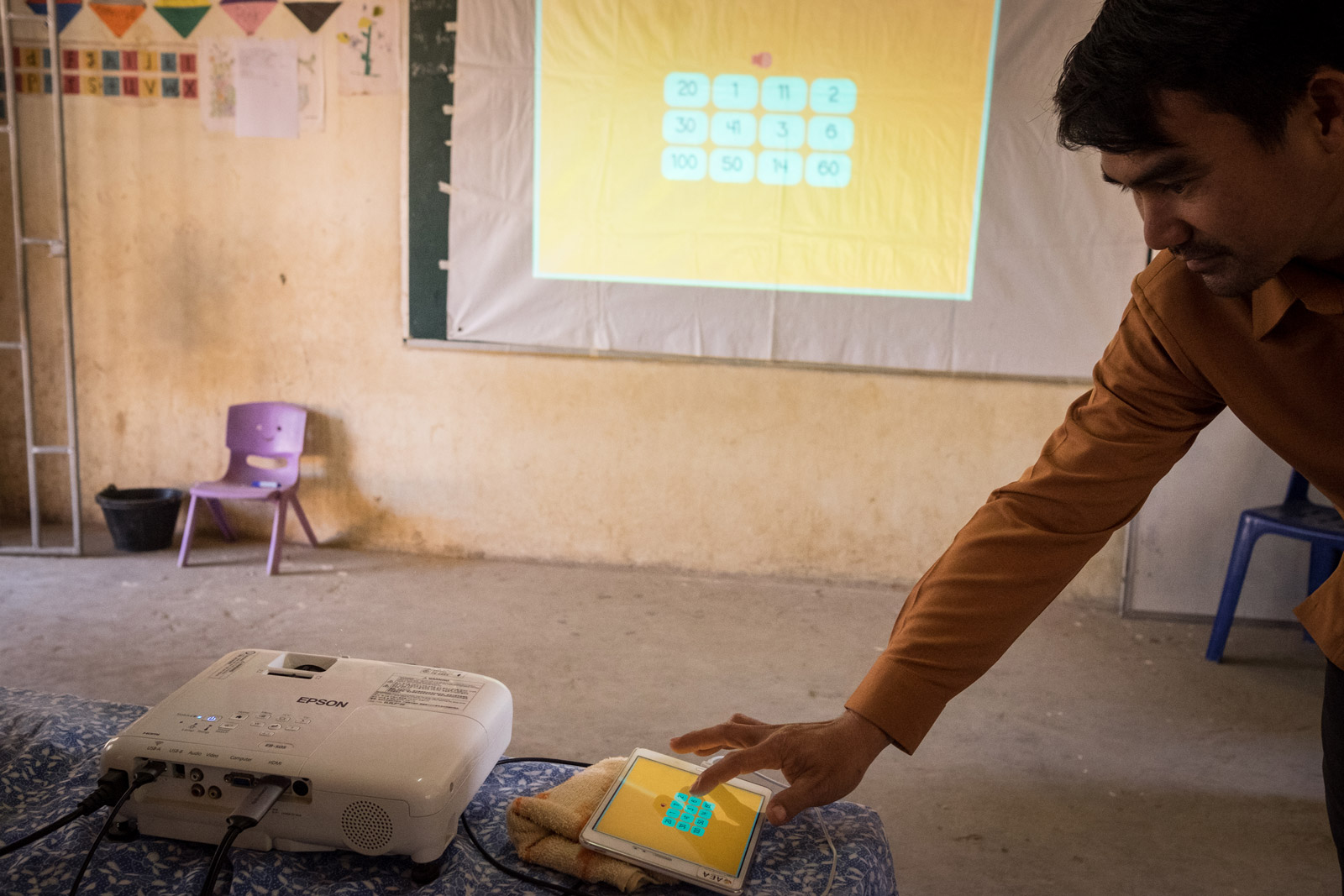
In PhuPhieng Primary School in Feuang district, Vientiane province, school principal Keryang Upoa and her colleagues received new equipment – computers, tablets, and a projector – and ICT training from Aide et Action two years ago. But when schools closed last March, online learning was still out of reach.
“Online learning is not suitable for this area because most students don’t have the internet at home. Even though many of their parents have smartphones and mobile internet, we only have one mobile telecommunications company we can use and the connection is too slow”.
Leng Thao, village deputy at PhuPhieng village, said the community’s lack of reliable internet also meant there was a lack of access to reliable health information during a critical time.
“Access to the internet is very challenging for our community. Firstly, we are so rural so the internet is slow and only available sometimes in some places. Second of all, many use it only to play games or watch movies and don’t know how to use it in a useful way [to access information].”
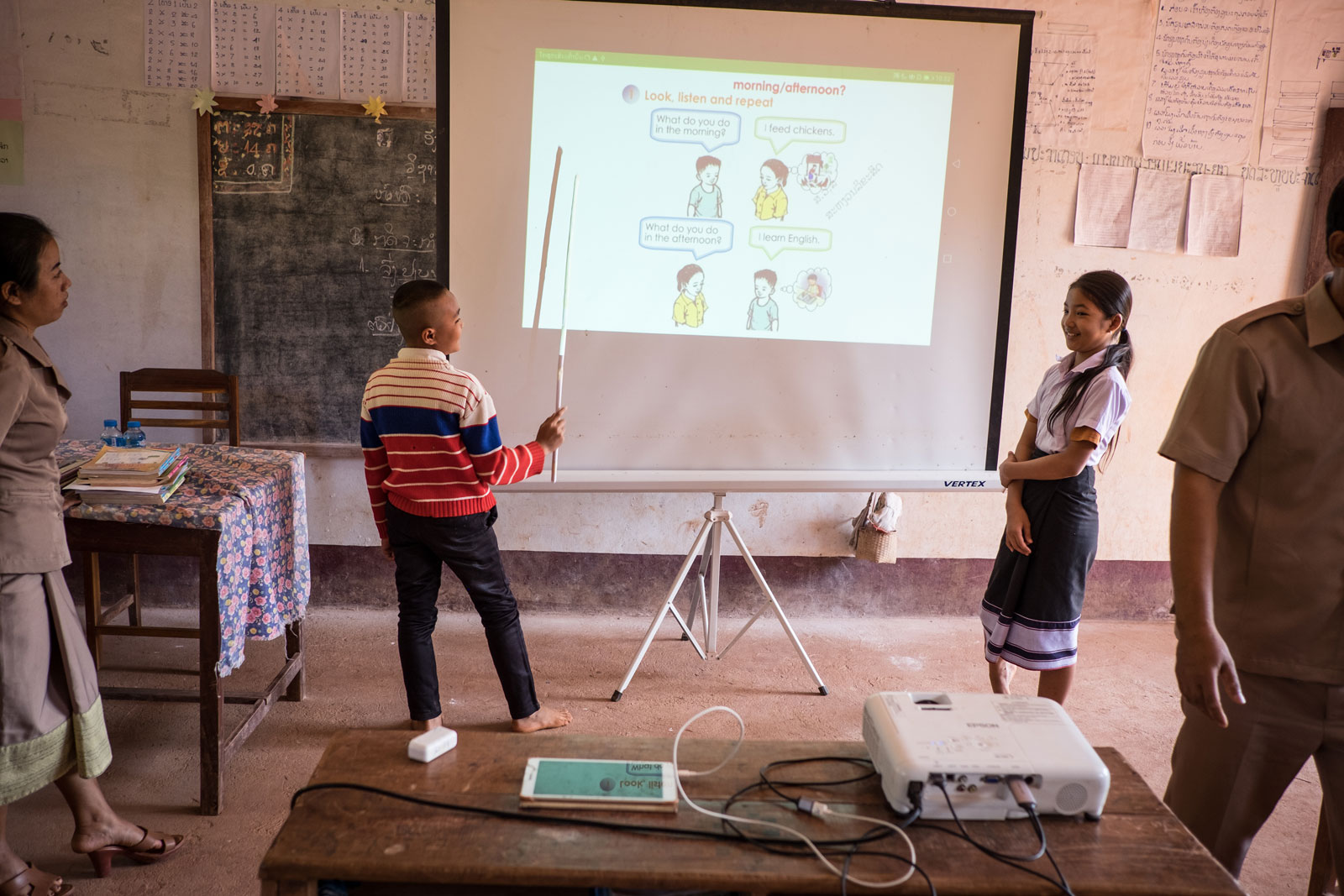
According to the World Bank, improving ICT-related policies – with specific focus on broadband connectivity, increasing investment in ICT by enhancing public and private partnerships, and connecting the rural population – are reported to be the top priorities in the Lao Government’s ICT Vision 2030. But the progress made on this remains to be seen.
But even while internet connection remains spotty, and remote learning a remote prospect, there are still those trying to bridge this gap.
In April last year, at the height of the pandemic, Aide et Action – in partnership with the MoES, the ICT Center, the Research Institute for Education Sciences, and the National University of Laos – piloted a Lao learning app for kindergarten and primary school students. The app seeks to improve digital and numerical literacy among primary school students across 25 schools the organisation is already working with. As connectivity issues remain, content on the app will also be accessible offline.
Further development of the app is underway and for organisations such as Aide et Action, commitment to equipping schools and mobile libraries with ICT equipment such as low-cost tablets and computers, and providing ICT training to teachers, will be top priorities this year.
For Phai Inthavong, a Grade 5 teacher in PhonMuang Primary school, Hinherb district, Vientiane province, the solution to the problems brought to light by the pandemic is simple.
“For now, online learning is just in the big cities like Vientiane capital and our community still doesn’t understand, we don’t use it,” he said. “But if all our students or their families have smartphones and reliable internet, teachers like me can send them lessons and homework and help to keep them in school”.
This article has been written by Aide et Action as a part of a partnership with Southeast Asia Globe to highlight the need for equal access to education in the region. Find out more here.

